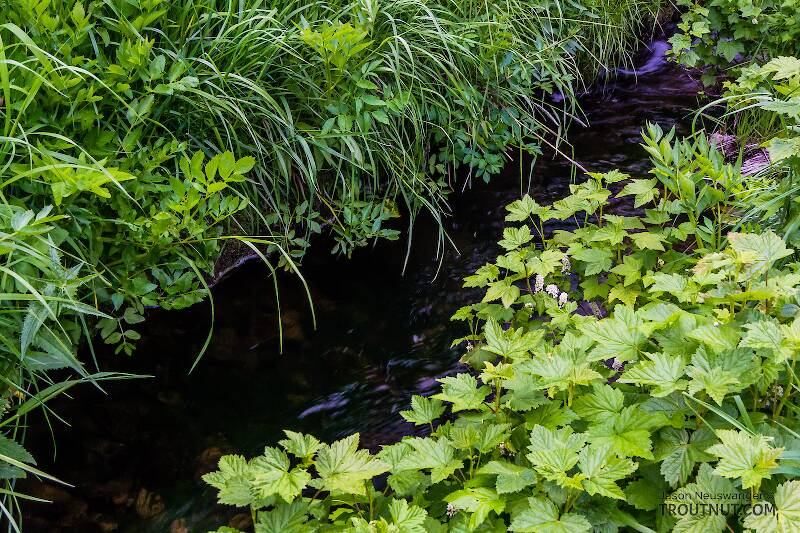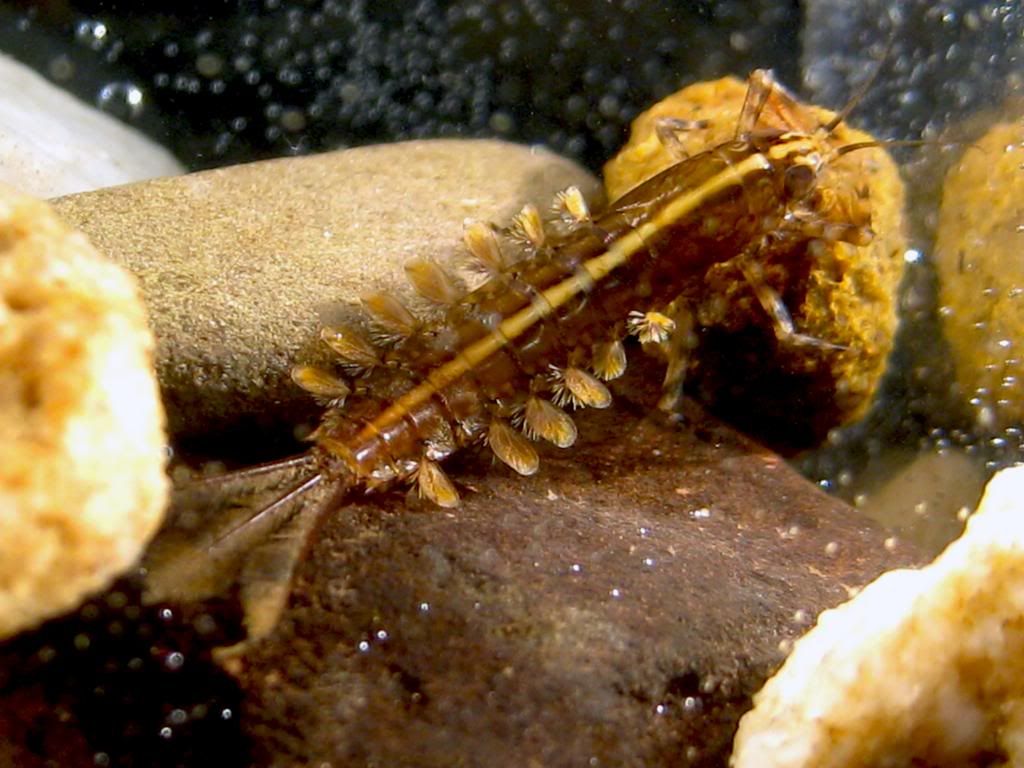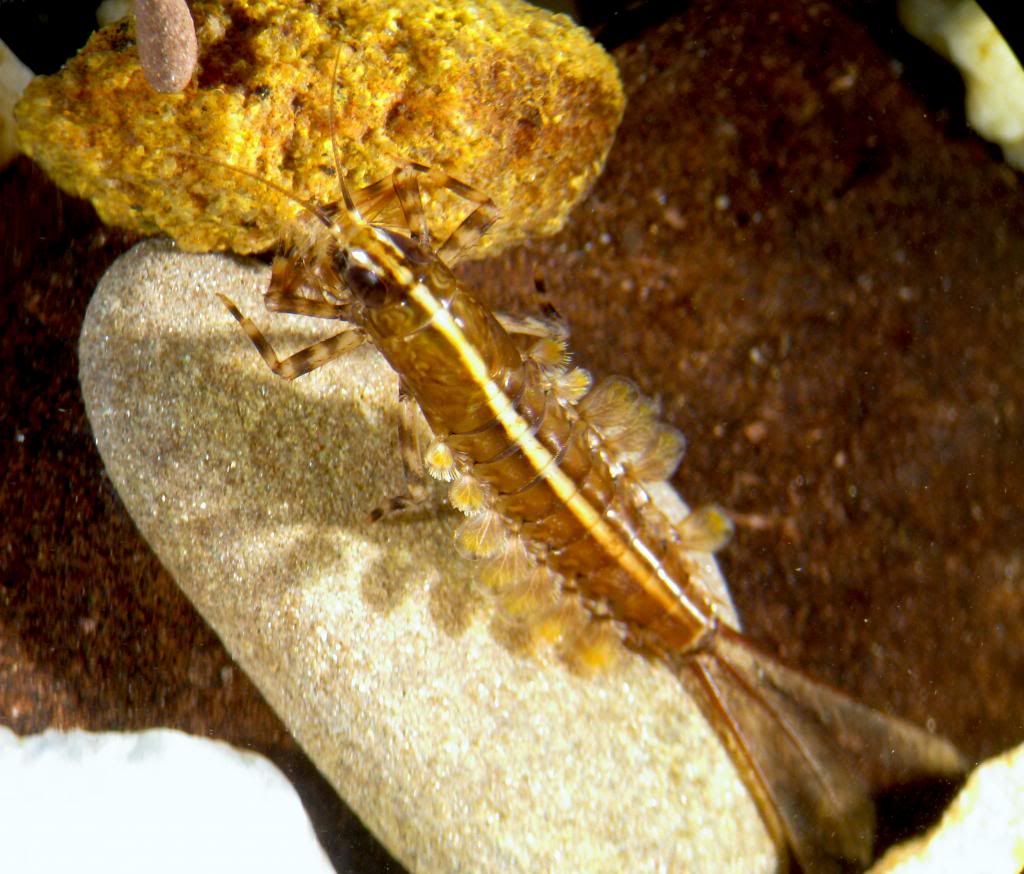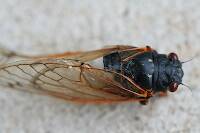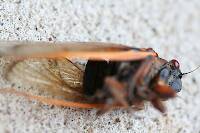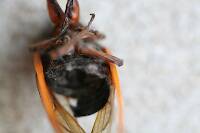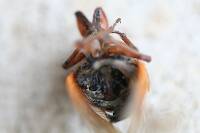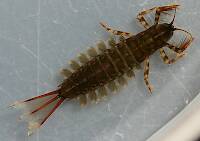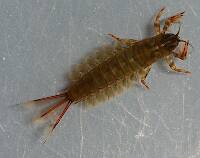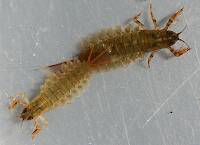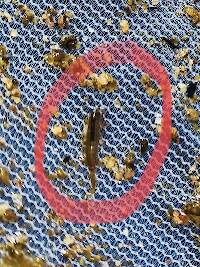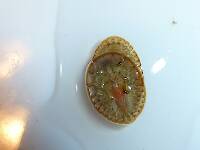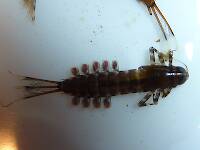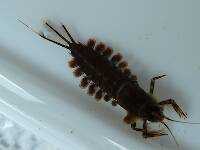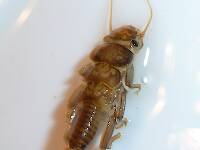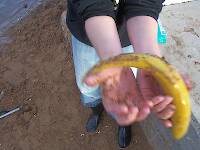
Salmonflies
Pteronarcys californica
The giant Salmonflies of the Western mountains are legendary for their proclivity to elicit consistent dry-fly action and ferocious strikes.
Featured on the forum


Troutnut is a project started in 2003 by salmonid ecologist Jason "Troutnut" Neuswanger to help anglers and
fly tyers unabashedly embrace the entomological side of the sport. Learn more about Troutnut or
support the project for an enhanced experience here.
Entoman on Feb 26, 2013February 26th, 2013, 4:25 am EST
Isonychiids are tough for you guys. We've only got one out here to worry about. This specimen has the overall light color of rufa and the leg banding and prominent full length dorsal stripe of some forms of bicolor. The latter is my opinion. They are all so similar in this species group that there aren't any morphological characters (that I'm aware of) reliable enough to tell them apart in the nymph stage. Kondratieff came up with a few provisionally back in the 80's that were largely shot down a few years later by McCafferty. Depending on color and maculation patterns with species so variable (at least in this regard) is shaky diagnostic ground. :)
"It's not that I find fishing so important, it's just that I find all other endeavors of Man equally unimportant... And not nearly as much fun!" Robert Traver, Anatomy of a Fisherman
Crepuscular on Feb 26, 2013February 26th, 2013, 4:34 am EST
Ah yeah. But what I take from this photo is that I need to look at some from the streams I fish and maybe incorporate some yellow into the gills on my nymphs.
Entoman on Feb 26, 2013February 26th, 2013, 4:41 am EST
Do you see many this color? I'm wondering if this could be another example of recent molting.
"It's not that I find fishing so important, it's just that I find all other endeavors of Man equally unimportant... And not nearly as much fun!" Robert Traver, Anatomy of a Fisherman
Crepuscular on Feb 26, 2013February 26th, 2013, 4:57 am EST
you know i don't think i do, but that Ameletus nymph had yellow trachea as well, and was collected from the same location. Diet? O2 levels? Neither the Heptageniids nor the Paralept had any yellow. I do see a yellow hue in the stripe sometimes though.
Quick Reply
Related Discussions
Topic
Replies
Last Reply
Re: Lots of new pictures to check out, coming online tonight/tomorrow
In General Discussion by Troutnut
In General Discussion by Troutnut
1
Oct 4, 2006
by Dinerobyn
by Dinerobyn
0
Jul 3, 2006
by Troutnut
by Troutnut
27
Jul 3, 2008
by Shawnny3
by Shawnny3
14
Sep 26, 2013
by Crepuscular
by Crepuscular

